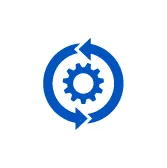Enterprise Application Platform
Enterprise Application Platform

Requirements
Critical enterprise applications like ERP for businesses, HIS for hospitals, and MES for manufacturing rely heavily on database services to maintain seamless operations. These systems cannot tolerate slow responses, disruptions, or security threats. To prevent productivity setbacks, the infrastructure must deliver top-tier performance, high availability, resilience, and robust security.
Sangfor Enterprise Application Platform Powered By HCI and aStor
Sangfor Hyperconverged Infrastructure (HCI): Redefining Enterprise Performance
Sangfor HCI is designed to meet the demands of critical enterprise applications with unmatched performance, resilience, and security at every platform layer.
In modern enterprises, workloads span Core Data Centers, Remote Offices and Branch Offices (ROBO), Disaster Recovery (DR) sites, and off-premises Cloud Environments. Sangfor HCI enables centralized management, ensuring seamless integration and maintenance across all locations.
With diverse data types like block, file, and object storage required for enterprise applications, Sangfor aStor, an advanced Enterprise Distributed Storage system, works seamlessly with Sangfor HCI to deliver optimal performance and robust data support.

Sangfor Enterprise Application Platform Advantages
Inside-Out Security with Sangfor HCI
Sangfor HCI integrates computing, storage, networking, and security into a streamlined enterprise application platform. This reduces integration risks and minimizes the attack surface.
The platform features a built-in aSEC Security Operation Center, which utilizes virtual security appliances to safeguard public-facing applications, web services, and critical internal databases. With centralized security management for both internal and external traffic, aSEC ensures comprehensive security visibility and governance across the HCI stack, protecting enterprise applications from the perimeter to the micro-segment level.
Efficient and Scalable Storage Solutions
Sangfor HCI’s integrated block storage pairs seamlessly with Sangfor aStor, a unified distributed storage system supporting block, file, and object storage. Together, they create a versatile and efficient storage layer for the Software-Defined Data Center (SDDC), enabling diverse business use cases.
Both HCI and aStor operate on cost-effective commercial off-the-shelf (COTS) x86 servers, ensuring scalability, affordability, and simplified management.
Local and Global Resiliency
Sangfor HCI ensures local high availability (HA) with built-in data redundancy and backup capabilities. For enhanced protection, Sangfor’s Disaster Recovery Management (DRM) solution provides off-site HA by replicating workloads to a DR site.
For maximum availability, DRM enables HCI to stretch clusters across two locations, creating an Active-Active Data Center setup to guarantee optimal uptime for enterprise applications.
Sangfor Enterprise Application Platform Features & Capabilities
Security
aSEC 2.0 with Distributed IPS
Instant Security Deployment: Apply security policies with a single click, no additional setup required.
Adaptive Policies: Automatically adjusts security policies to align with VM changes.
Unified Interface: Seamlessly manage both security and cloud resources from one platform.
Scalability and Precision: Granular control at the VM level with the ability to scale with business needs.
VM Protection with Sangfor Endpoint Secure
Integrated endpoint security featuring malware detection, ransomware protection, asset management, and vulnerability assessment.
Automatic agent deployment with minimal resource usage.
File-level protection specifically for Linux systems.
Threat Detection & Response with Sangfor Cyber Command
Uses network traffic analysis to detect threats and works with Sangfor Network Secure and Endpoint Secure for automatic or manual threat response.
Ransomware: Captures VM snapshots to minimize data loss and facilitate recovery.
Botnets: Quarantines compromised VMs using the distributed firewall.
Cryptomining: Suspends or terminates affected VMs to prevent illegal resource usage.
Disk Encryption Features
Secures VM disk images and snapshots with AES-256 and SM4 encryption.
Encryption is VM-specific with unique keys for each VM and encryption modules for added security
Performance
HCI Host Affinity
The Host Affinity policy allows you to confine the entire stack of a web application—including the web, application, and database VMs—to a single server host.
This optimizes the communication between different tiers, as there is no need to route data to another server host.”
HCI Virtual Load Balancer & Auto-Scaling
The virtual load balancer (known as Virtual Application Delivery [vAD] in Sangfor HCI) can be configured to distribute user traffic across multiple web or application VMs. This ensures that user traffic is evenly balanced, leading to optimal performance and user experience.
Auto-scaling groups comprising multiple VMs can be set up to automatically scale out or scale in based on resource utilization. Thresholds can be configured so that scaling is triggered when demand spikes, ensuring consistent performance.
Scale Out Capacity with Performance
Traditional SAN storage uses a frame-based design (controller with enclosures of disks) and scales up by adding more disks when performance bottlenecks occur at the controller.
Both HCI and aStor utilize a frame-less, shared storage design. By adding new nodes that connect to an ethernet storage switch, HCI and aStor can simultaneously scale out both storage capacity and data throughput, enhancing overall system performance.
Resiliency
HCI Cluster High Availability (HA)
Sangfor HCI ensures robust data protection by replicating 2 or 3 copies of data across the cluster.
2-Copy Redundancy: Tolerates a single host failure without data loss.
3-Copy Redundancy: Handles two host failures seamlessly.
With N+1 host redundancy, VMs affected by a host failure automatically restart on an operational host, ensuring uninterrupted service.
aStor Data Protection
Sangfor aStor leverages Erasure Coding to secure data across the storage cluster. This advanced mechanism offers enhanced storage efficiency and safeguards data during server node failures.
Local High Availability
Integrated backup solutions store data on external systems with flexible scheduling options (hourly or daily).
Continuous Data Protection (CDP): Achieves near-zero RPO by backing up data every second, enabling rapid recovery.
Global High Availability
Sangfor Disaster Recovery Management (DRM) offers configurable RPOs and RTOs tailored to application criticality.
On-Premises DR: Available as a CAPEX model.
Cloud DR: Offered as an OPEX model through Sangfor Managed Cloud Services.
Supports VM replication across third-party virtualization platforms for maximum flexibility.
Enterprise Application Platform Use Cases

Applications with High Uptime Demands
Sangfor HCI’s redundant cluster design, local backup, and disaster recovery ensure uninterrupted operations for systems like MES, HIS, and PACS, protecting productivity and patient care.

Applications with Sensitive Data
Sangfor HCI protects critical applications with aSEC security against threats like data theft and ransomware, while HCI and aStor ensure comprehensive encryption for sensitive data and compliance.

Applications with Unstructured Data
Sangfor aStor handles massive data volumes in industries like healthcare, media, and research, offering cost-effective, scalable, and seamless solutions for unstructured data and long-term retention.
